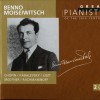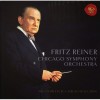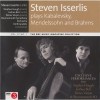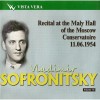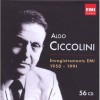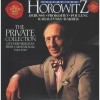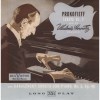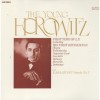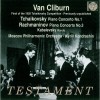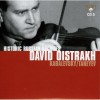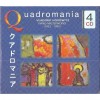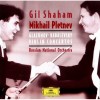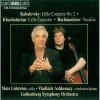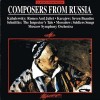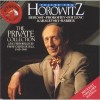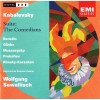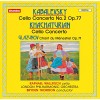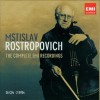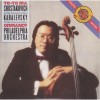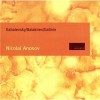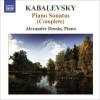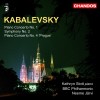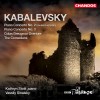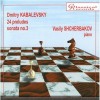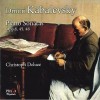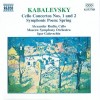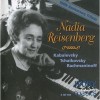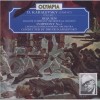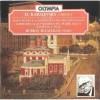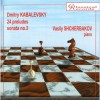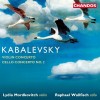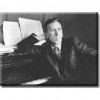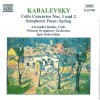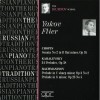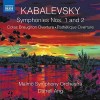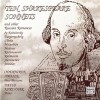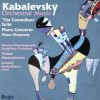传记
Kabalevsky was born in Saint Petersburg. His father was a mathematician and encouraged him to study mathematics; however, in early life he maintained a fascination with the arts, and became an accomplished young pianist, including a three year stint as a pianist in silent theaters.[1] He also dabbled in poetry and painting. In 1925, against his father's wishes, he accepted a place at the Moscow Conservatory, studying composition under Nikolai Myaskovsky and piano with Alexander Goldenweiser. In the same year he joined PROKULL (Production Collective of Student Composers), a student group affiliated with Moscow Conservatory aimed at bridging the gap between the modernism of the ACM and the utilitarian "agitprop" music of the RAPM. He became a professor at the Moscow Conservatory in 1932.
During World War II, he wrote many patriotic songs, having joined the Communist Party in 1940, and was the editor of Sovetskaya Muzyka for its special six-volume publishing run during the war. He also composed and performed many pieces for silent movies and some theater music.
In 1948, when Andrei Zhdanov declared his resolution on the directions that Soviet music should take, Kabalevsky was originally on the list of named composers who were the most guilty of formalism; however, due to his connections with official circles, his name was removed. Another theory states that Kabalevsky's name was only on the list because of his position in the leadership of the Union of Soviet Composers.
In general, Kabalevsky was not as adventurous as his contemporaries in terms of harmony and preferred a more conventional diatonicism, interlaced with chromaticism and major-minor interplay. Unlike fellow composer Sergei Prokofiev, he embraced the ideas of socialist realism, and his post-war works have been characterized as "popular, bland, and successful", though this judgement is attributed to many other composers of the time, and some of Kabalevsky's best-known "youth works" date from this era (the Violin Concerto, the first Cello Concerto).
Perhaps Kabalevsky's most important contribution to the world of music-making is his consistent efforts to connect children to music. Not only did he write music specifically directed at bridging the gap between children's technical skills and adult aesthetics, but during his lifetime he set up a pilot program of music education in twenty-five Soviet schools. Kabalevsky himself taught a class of seven-year-olds for a time, teaching them how to listen attentively and put their impressions into words. His writings on this subject were published in the United States in 1988 as Music and education: a composer writes about musical education.
He was awarded a number of state honors for his musical works (including three Stalin Prizes). Kabalevsky had become quite a force in musical education. He was elected the head of the Commission of Musical Esthetic Education of Children in 1962 as well as being elected president of the Scientific Council of Educational Esthetics in the Academy of Pedagogical Sciences of the USSR in 1969. Kabalevsky also received the honorary degree of president of the International Society of Musical Education. Kabalevsky wrote for all musical genres; his pieces were all faithful to the ideals of Soviet realism as well. In Russia, Kabalevsky is most noted for his vocal songs, cantatas, and operas while overseas he is known for his orchestral music. Kabalevsky frequently travelled overseas; he was a member of the Soviet Committee for the Defense of Peace as well as a representative for the Promotion of Friendship between the Soviet Union and foreign countries.
His notable students included Leo Smit.
He died in Moscow on 14 February 1987.







![Russian legends - David Oistrakh [20 CD]](http://static.classicalm.com/repository/collection-cover/small/267-img1318418713553266.jpg)
![Russian legends - Daniel Shafran [7 CD]](http://static.classicalm.com/repository/collection-cover/small/277-img1319146356180506.jpg)
